Imagine an enchanted place, rich in history, where tranquility reigns and the most harassing noise you can hear is the quacking of ducklings. Imagine an old mill village built on the banks of a river, with lots of colorful flowers and a heady scent spreading around you; and as in all enchanted places, you cannot miss a cool grove surrounding the little village. So, now that you are done imagining, take your car, bicycle, train or whatever means you prefer, and visit Borghetto sul Mincio! :-)
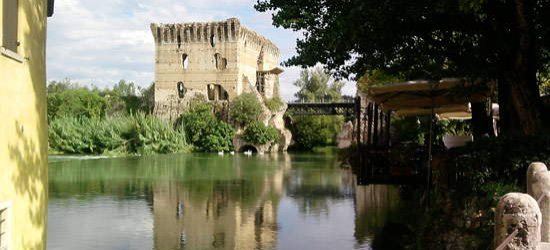 |
| Panorama of the Mincio River from Borghetto |
We are on the border between Veneto and Lombardy, and to be exact we are in the municipality of Valeggio sul Mincio, of which Borghetto is a hamlet. This small fortified village has ancient origins: this area, in the Middle Ages, was in fact border territory and was constantly the object of the aims of various seigniories (Milan, Mantua, Verona) because we are near one of the most convenient and safest fords of the Mincio River.
Borghetto’s origins go back as far as the Lombard era, although this ford was also known to the ancient Romans. Walking through the narrow streets of the village, one of the most important buildings we find is the Curtis Regia, which, as the plaque on one of the walls indicates, is a building dating back to the seventh century A.D., which had functions of defense and control (in fact, a gabelliere who collected taxes for crossing the river had its headquarters here), and which represents the first nucleus of the Borghetto settlement. However, the building has undergone considerable remodeling over the centuries.
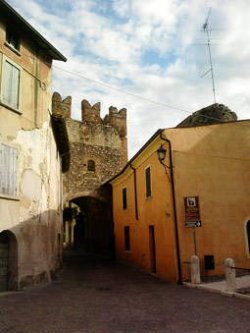 |
| An ancient alley in Borghetto with one of the gates to the village |
Medieval history refers us to one of the first buildings we observe upon arriving in the village: the Visconti bridge, an imposing bridge-dam between two fortresses now in ruins but still very impressive. It was built by the lord of Milan Gian Galeazzo Visconti after the conquest of Verona (whose independence ended with the fall of the Scaligeri in 1387, precisely at the hands of Visconti and the Milanese): we are between 1393 and 1395. This particular construction, which still serves as a bridge over the Mincio River, probably had both defensive (after the conquest of Verona, this became a border area between Milan and Mantua) and practical functions, that is, it was built with the intention of diverting the waters of the Mincio so that they would leave the Mantuan countryside “dry” (which, however, failed). The bridge was connected to the Serraglio system, which we had discussed in our post devoted to the Scaliger Castle of Villafranca di Verona: it was a long wall, studded with fortifications, that was intended to defend the southern border of the Scaliger seignory.
After the area came under the final control of the Venetian Republic, and Borghetto no longer played a strategic role, the village became an agricultural center of considerable importance, and the numerous mills that still characterize it today made their appearance: these are driven by the waters of the Mincio River, which, as it enters Borghetto, becomes particularly impetuous, and therefore suitable for turning the wheels! The mills were used for milling wheat (i.e., grinding it into flour) and for husking rice, that is, the operation by which the coatings of the grains are removed. The mills were in operation until well into the twentieth century: having ceased to be necessary as a result of the advent of industrial production, the mills were turned into businesses, and today on their premises you can find small hotels, quaint little restaurants, or stores selling handicrafts and tasty local products. And that is precisely the magic of the village: seeing how small businesses have sprung up in the productive places of yesteryear, continuing the traditions of the past.
Near the small bridge that crosses the river inside the village, we find the parish church, dedicated to St. Mark: it has a sober neoclassical facade, entirely white, with a bell tower carved out of an old Scaligera watchtower, and which preserves a bell dated 1381. On one of the walls enclosing the church’s small square, we have a series of plaques commemorating events from Borghetto’s more recent history, such as the battle between Napoleon and the Austrians on May 30, 1796 fought near the Visconti bridge, the passage of Victor Emmanuel II on May 30, 1848 (it was in Borghetto that the king would learn the outcome of the battle of Curtatone and Montanara), and the passage of the Austrian army on June 24, 1859 after the defeats at San Martino and Solferino. Before crossing the bridge, we can then pause for a moment to see the statue of St. John of Nepomuk, patron saint of bridges and rivers.
The bridge, made of wood, is truly enchanting: numerous pots of geraniums color it on either side; it really looks all magical! The perfect little place for lovers! It is surrounded by a delightful panorama: on one side we see the larger of the two fortresses of the Visconti Bridge and the Curtis Regia, which is on the opposite side from the one from which we come. On the other side are the banks of the Mincio lush with vegetation and the last offshoots of the hill that separates Borghetto from Valeggio. Through the part of the village built on the right bank of the river, we can get all the way down to the ruins of the Visconti bridge, over which a road now passes.
And so, wandering among ancient mills, stone buildings and living, evocative evidence of a centuries-old history, it is time to leave Borghetto. The ideal place for anyone who loves peace and quiet, romantic walks by the river, stopping from time to time to watch the many ducks gliding lightly on the water, the calm of a village where time really seems to have stopped: we are sure that if you too love all this, you will have felt like visiting :-) So do not hesitate to contact us for any advice ;-) We leave you below with the photostory of Borghetto sul Mincio!
Panorama of the Mincio River from Borghetto
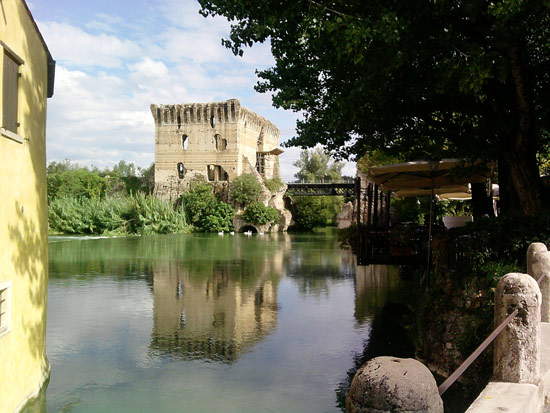
| The ancient gateway to the village... | ... and the alley that precedes it |
 |
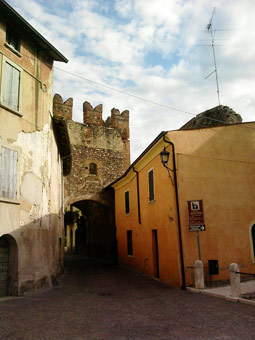 |
The Curtis Regia, the oldest building in Borghetto sul Mincio

The Visconti bridge-diga of Borghetto sul Mincio
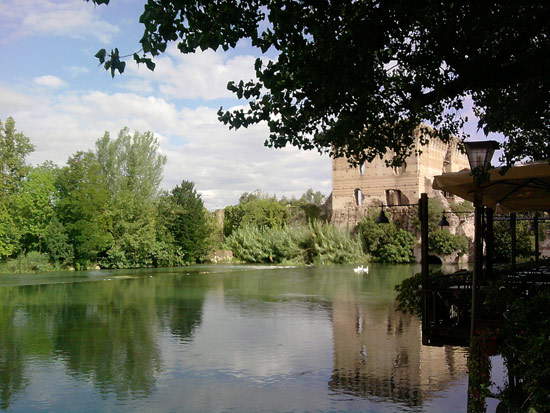
The wheel of one of Borghetto’s many mills

Today, Borghetto’s mills have been converted into businesses
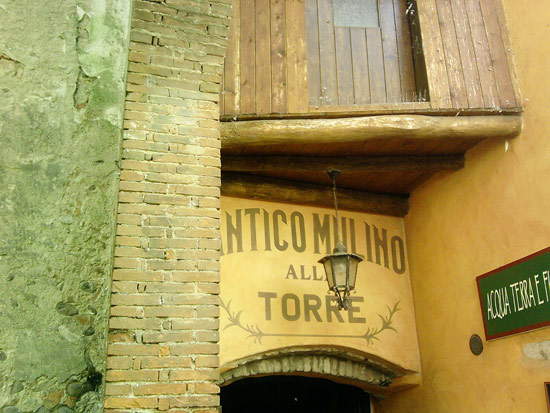
| And near the bridge there is also a statue of St. John of Nepomuk | |
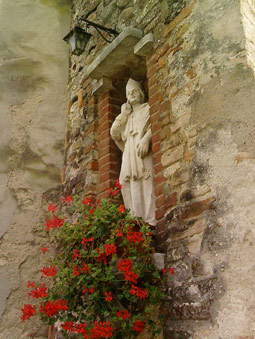 |
The plaque reminds us of the story of St. John of Nepomuk, patron saint of bridges and rivers
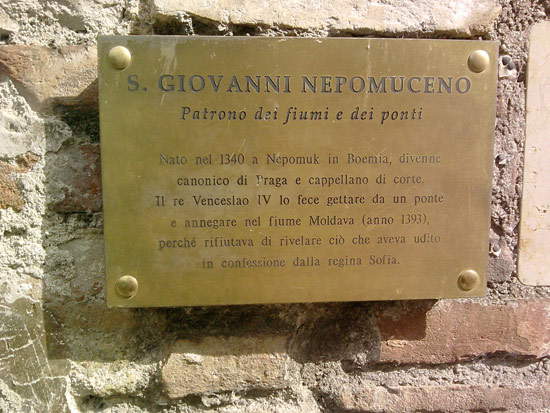
Plaques near St. Mark’s church remind us of the history of Borghetto

Image of the Mincio River flowing beneath the buildings
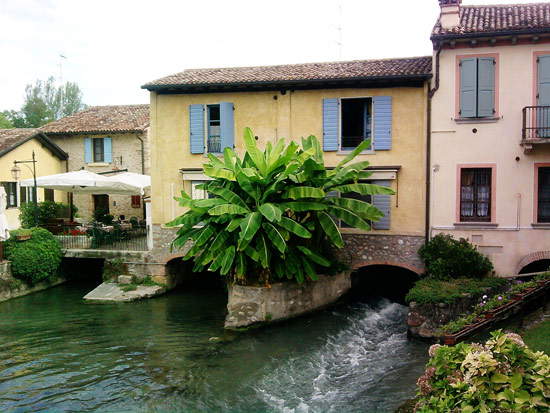
The wooden bridge over the Mincio River, with its geraniums!

On the bridge, we see on one side the Visconti bridge...
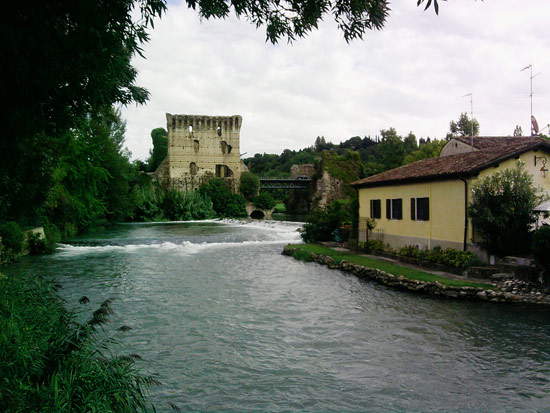
... and on the other, the forest: on the bank are the tables of some quaint places!
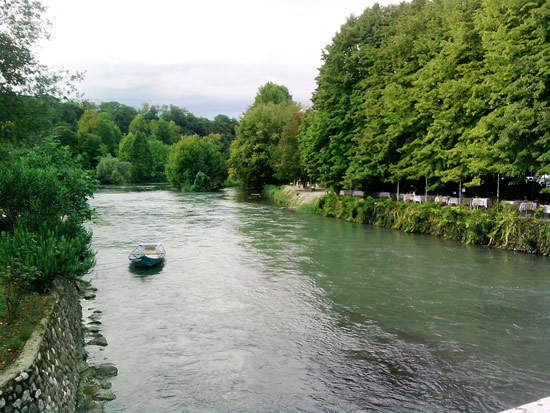
| A narrow street of Borghetto... | ... continuing to walk through the streets of the hamlet... |
 |
 |
After the last houses of the Borghetto settlement, we can approach the ruins of the Visconti bridge

The ruins of the Visconti bridge
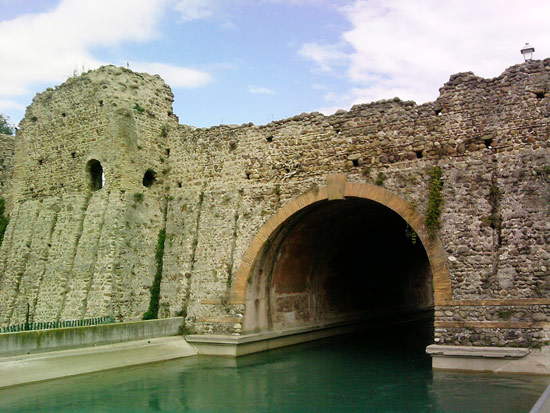
The banks of the Mincio River, ideal for a stroll
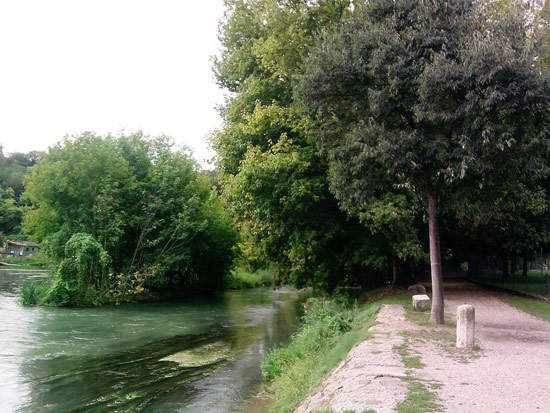
Cute little ducks in the waters of the Mincio :-)
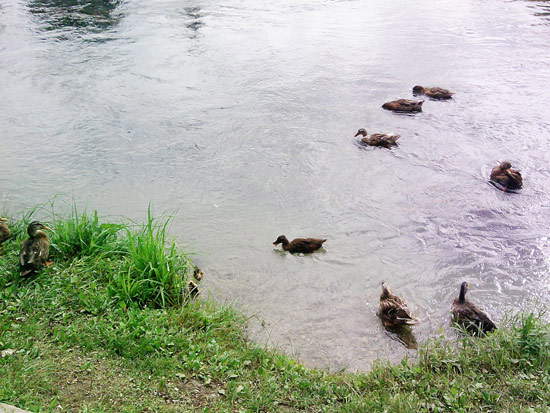
In Borghetto we also came across these two beautiful horses.
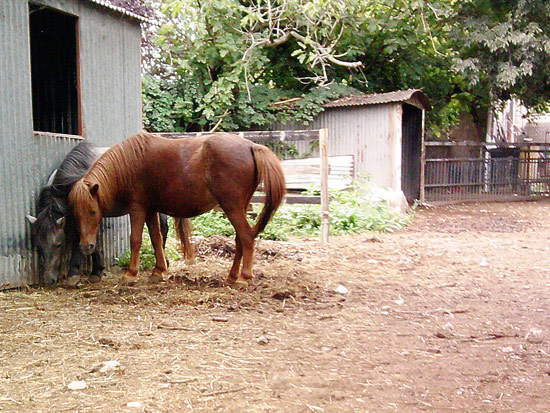
Time to return, and this is the landscape of the Mantuan countryside near Borghetto....

Warning: the translation into English of the original Italian article was created using automatic tools. We undertake to review all articles, but we do not guarantee the total absence of inaccuracies in the translation due to the program. You can find the original by clicking on the ITA button. If you find any mistake,please contact us.